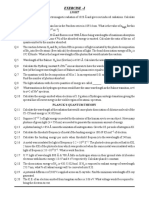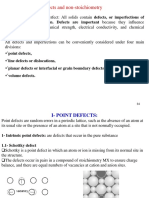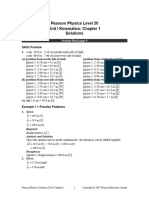0% found this document useful (0 votes)
36 views20 pagesStructure of An Atom Level - 2
The document contains a series of physics problems and solutions related to quantum mechanics, including calculations of bond energies, photon emissions, and energy levels in atoms. It covers topics such as the photoelectric effect, atomic spectra, and magnetic moments of ions. Each problem is followed by a detailed solution and the correct answer is provided for each question.
Uploaded by
NorrrCopyright
© © All Rights Reserved
We take content rights seriously. If you suspect this is your content, claim it here.
Available Formats
Download as PDF, TXT or read online on Scribd
0% found this document useful (0 votes)
36 views20 pagesStructure of An Atom Level - 2
The document contains a series of physics problems and solutions related to quantum mechanics, including calculations of bond energies, photon emissions, and energy levels in atoms. It covers topics such as the photoelectric effect, atomic spectra, and magnetic moments of ions. Each problem is followed by a detailed solution and the correct answer is provided for each question.
Uploaded by
NorrrCopyright
© © All Rights Reserved
We take content rights seriously. If you suspect this is your content, claim it here.
Available Formats
Download as PDF, TXT or read online on Scribd
/ 20





















































































